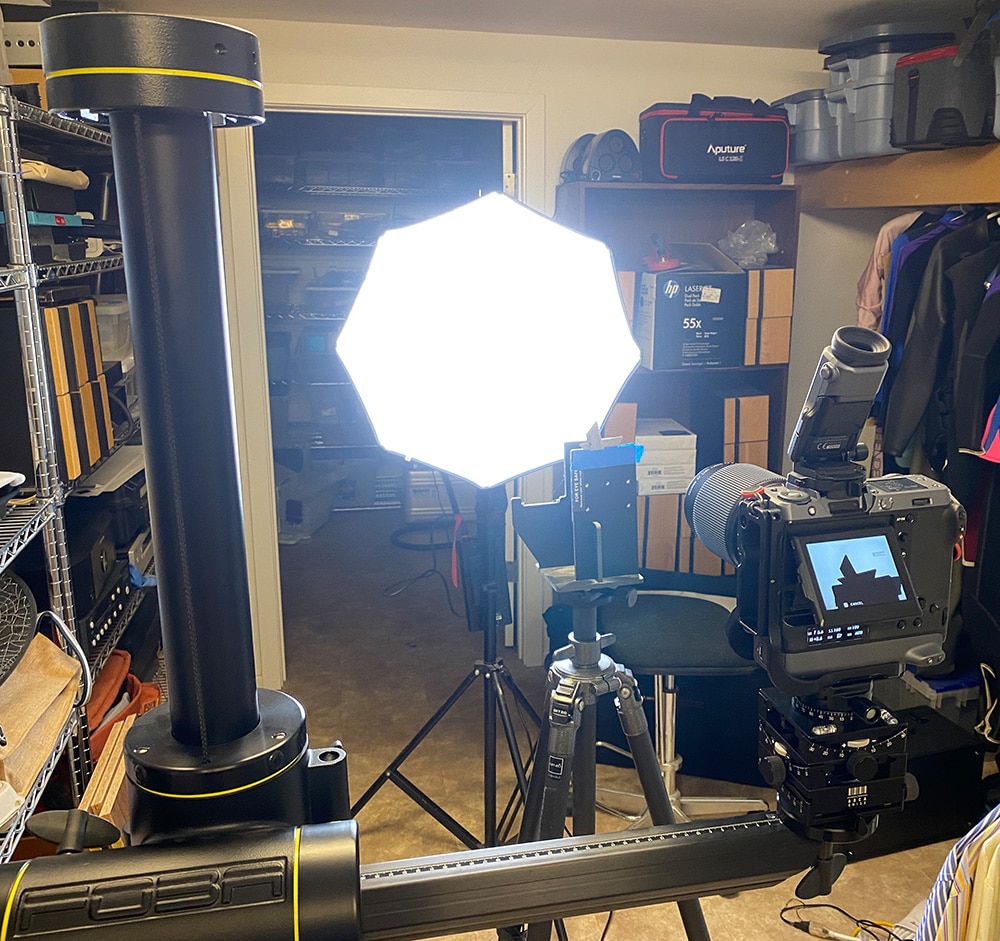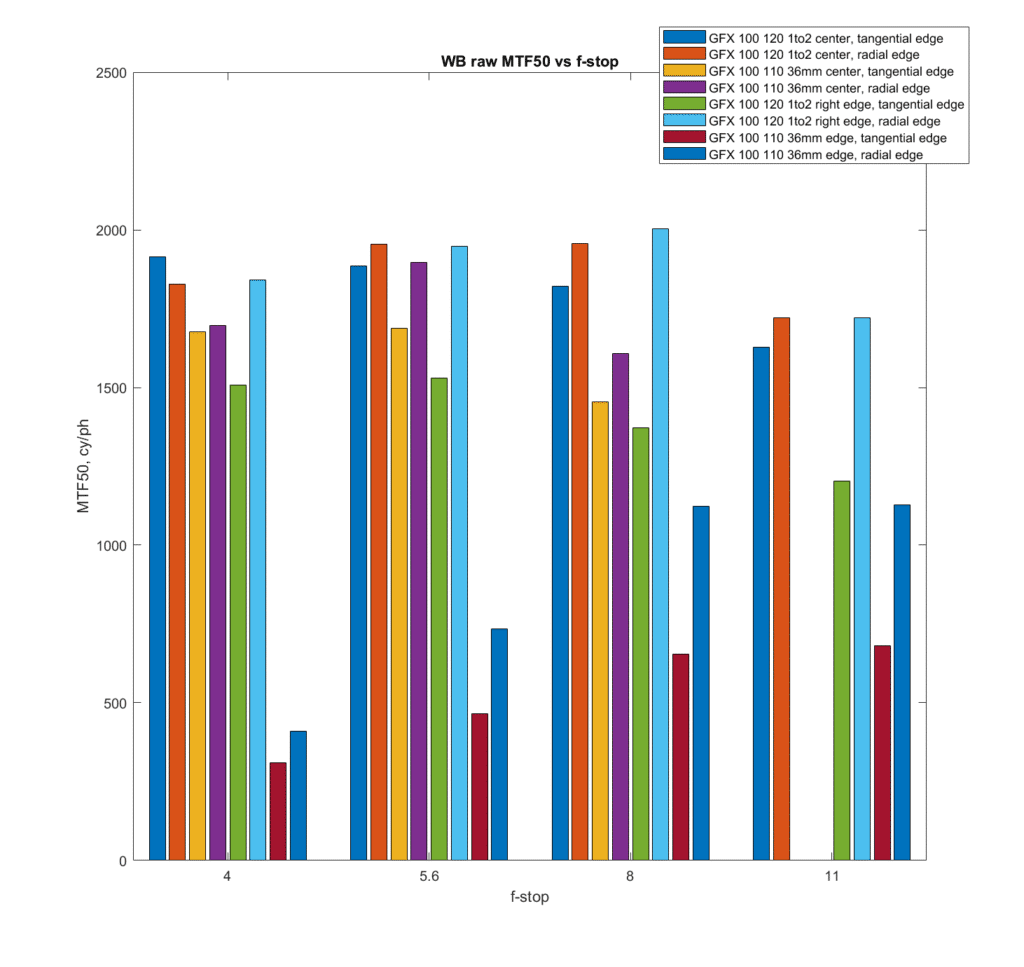This is one in a series of posts on the Fujifilm GFX 100. You should be able to find all the posts about that camera in the Category List on the right sidebar, below the Articles widget. There’s a drop-down menu there that you can use to get to all the posts in this series; just look for “GFX 100”. Since it’s more about the lenses than the camera, I’m also tagging it with the other Fuji GFX tags.
In the previous three posts, I looked at the microcontrast, field curvature and sharpness of the Fujifilm 120 mm f/4 GF lens at minimum focusing distance (MFD) with and without two 18mm extension tubes. In this post I’ll look at MTF50 (a good proxy for sharpness), both on the lens axis (in the center of the image), and at the far right edge. .
I used a backlit razor blade, in this setup:
Here’s the test procedure:
- GFX 100
- Foba camera stand
- C1 head
- 2 each 18mm Fuji extension tubes for the 110/2
- No tubes for the 120/4
- Lens focused to close to as near as it would focus
- ISO 100
- Electronic shutter
- 10-second self timer
- f/4 through f/11 in whole-stop steps
- Exposure time set by camera in A mode
- Focus bracketing, step size 1, 150 exposures
- Initial focus short of target
- Convert RAF to DNG using Adobe DNG Converter
- Extract raw mosaics with dcraw
- Extract slanted edge for each raw plane in a Matlab program the Jack Hogan originally wrote, and that I’ve been modifying for years.
- Analyze the slanted edges and produce MTF curves using MTF Mapper (great program; thanks, Frans)
- Fit curves to the MTF Mapper MTF50 values in Matlab
- Correct for systematic GFX focus bracketing inconsistencies
- Analyze and graph in Matlab
The results:
The vertical axis is MTF50 in cycles per picture height. Higher is sharper. The horizontal axis is f-stop. There is one hole: I didn’t test the 110 in the center at f/11.
- The leftmost blue columns are for the 120/4 at minimum focusing distance (MFD) with no tubes, in the center of the image, with a vertical edge.
- The red columns are for the 120/4 at minimum focusing distance (MFD) with no tubes, in the center of the image, with a horizontal edge. In a perfect world, these columns would be the same height as the corresponding blue columns.
- The yellow columns are for the 110/2 at minimum focusing distance (MFD) with two 18mm tubes, in the center of the image, with a vertical edge.
- The purple columns are for the 110/2 at minimum focusing distance (MFD) with two 18mm tubes, in the center of the image, with a horizontal edge. In a perfect world, these columns would be the same height as the corresponding yellow columns.
- The green columns are for the 120/4 at minimum focusing distance (MFD) with no tubes, at the right edge of the image, with a vertical edge.
- The cornflower blue columns are for the 120/4 at minimum focusing distance (MFD) with no tubes, at the right edge of the image, with a horizontal edge.
- The brick red columns are for the 110/2 at minimum focusing distance (MFD) with two 18mm tubes, at the right edge of the image, with a vertical edge.
- The rightmost blue columns are for the 110/2 at minimum focusing distance (MFD) with two 18mm tubes, at the right edge of the image, with a horizontal edge.
Conclusions:
- You can get to about 1:2 magnification at MFD with 36 mm of extension tubes on a 110/2 GF or with no tubes on a 120/4 GF.
- Surprisingly, either way is about as sharp in the center.
- However, the edges are poor with the 110 and the tubes.


Alex says
There is a video (https://www.youtube.com/watch?v=t1Tsr5YyPes) suggesting that the 45-100 GF lens fares well with tubes. It is based on anecdote, not systematic testing like yours, but since I don’t own this lens I’m wondering if you have tried tubes on it? Thanks for your time.
JimK says
I have not.